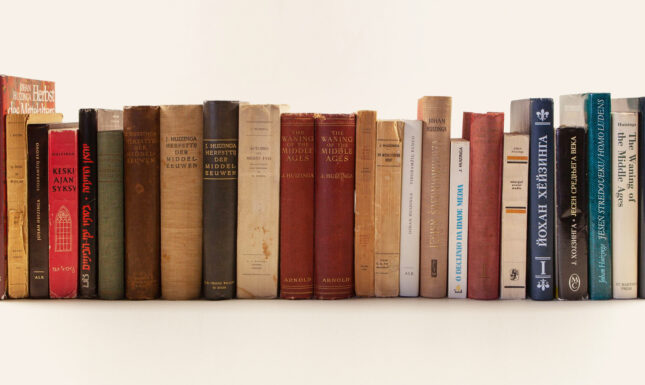Johan Huizinga’s archives, a goldmine for his works
150 years since the birth of Johan Huizinga, his academic archive held at Leiden University Libraries is a treasure trove of knowledge and insight.
On December 7, 2022, it will be one hundred and fifty years ago that Johan Huizinga - the Netherlands’ most important authority in the field of cultural history - was born in the city of Groningen. He was a professor of general history at Leiden University from 1915 to 1941. The entire academic world in the Netherlands continues to honour him as a paragon of culture, as an admonisher of his and our times, and as a cultural philosopher who, with his Homo Ludens (1938) is today more renowned than ever, all over the world.
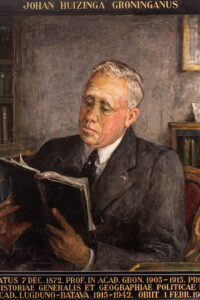

As a historian, he distinguished himself with his Autumntide of the Middle Ages (1919), a grandiose book about the painting of Jan van Eyck, placed in the context of the socio-cultural history of the time. The subsequent period of Humanism and Reformation, Huizinga managed to present succinctly in his biography Erasmus (1924). Two books on the past and present of the United States (1918 and 1926, respectively) were surprising to American readers, even at the time. He lucidly depicted Dutch painting during the half-century around 1900 in his Leven en werk van Jan Veth (1927), the biography he wrote about his friend and fellow fighter for monument care and the preservation of historic urban beauty. In numerous essays, Huizinga reflected on subjects from the general history of the humanities, culture and society: Tien studiën (1926) and Cultuurhistorische verkenningen (Cultural-historical Explorations) (1929), which also found their way abroad in English and German translations. With In de schaduwen van morgen (In the Shadow of Tomorrow), he addressed the dangers that threatened society in his lifetime or were already disrupting it: the totalitarian regimes from the outside or our dereliction of knowledge and conscience from within.
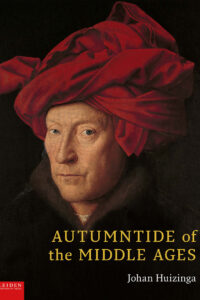

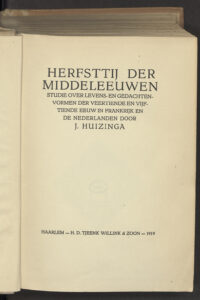

Huizinga not only gained fame through his publications, but also spread knowledge of the history of the Netherlands through lectures at home and abroad, and underlined the importance of the Netherlands in the international community. He acted as a cultural ambassador for the Netherlands. He was a member of the Internationale Commissie voor Intellectuele Samenwerking (International Commission on Intellectual Cooperation, of the League of Nations) on behalf of our country. With these posts and editorship of the influential monthly magazine De Gids (since 1915) and his membership in the Dutch Royal Academy of Sciences (1916), Huizinga acquired the prestige and influence of a public intellectual.
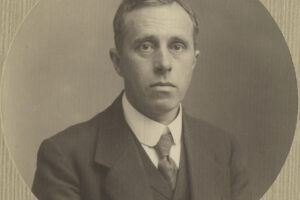

His knowledge and interest in numerous fields and academic pursuits, such as linguistics and religion, preferably from a comparative perspective, history and culture, are well reflected in the overwhelming amount of large and small texts that together form his academic archive. This archive not only contains notes for his publications, but also his manuscripts of lectures, notes for seminars with students, ideas, and hunches on numerous subjects, sometimes extensive, sometimes brief. A gold mine for scholars of his work in the broadest sense of the word. One just has to master the Dutch language, which is peanuts compared to all the languages Huizinga commanded.
More than a year after his death, Huizinga’s archive was granted to the manuscript collections of Leiden University Libraries in 1946, following Huizinga’s wishes. From 1948 to 1951, his long-time publisher, Tjeenk Willink in Haarlem, published eight volumes of his Collected Works, completed in 1953, with an index volume that includes an excellent bibliography. In addition, Tjeenk Willink continued to keep Huizinga’s books available on the market, published soberly but with a modern and elegant design. Long, historians’ interest in Huizinga was limited to his published works. It was not until 1972, Huizinga’s hundredth year of birth, that Leiden professor A.E. (‘Dolf’) Cohen, the last to receive his doctorate from Huizinga, was the first to study his papers, which led to a modest list of placements.
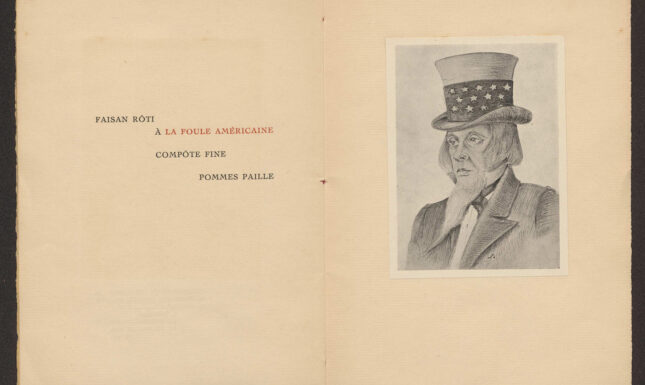

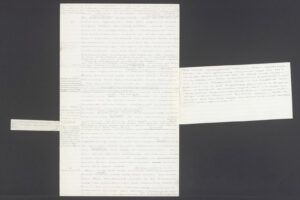

In 1997/98 I was enabled to compile an inventory and describe Huizinga’s archive after I had familiarized myself with it during research for the publication of Huizinga’s Correspondence (3 vols., 1989-1991) and my dissertation Het Eeuwige verbeeld in een afgehaald bed. Huizinga en de Nederlandse beschaving (1987). The Inventaris van het archief van Johan Huizinga (1998) also contains a bibliography, based on the 1953 edition, but continued up to and including 1997, and expanded with those titles of publications that had escaped the compilers of the Collected Works.
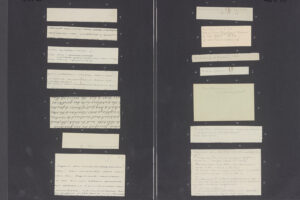

Based on this inventory, the entire Huizinga archive was made available digitally, free of charge in 2019 in the Leiden Digital Collections with links to: https://Huizinga-Online.nl. This project was made possible in part by the national digitisation platform Metamorfoze. Both websites offer the Collected Works digitally, as well as overviews of Huizinga’s activities: a year list, a calendar, and an overview of all his letters, including those that are not published in the Correspondence. Leiden University Libraries will continue to accept or acquire additions to the Huizinga Archives.
